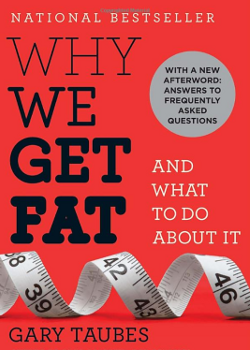 So, why do people get fat, anyway? I’ve been putting in a few minutes here and there throughout the week between work, more work, freelance work, homework, and food prep to complete yet another assignment due this week for the double-length Whole30 program I’m currently following. With no further ado:
So, why do people get fat, anyway? I’ve been putting in a few minutes here and there throughout the week between work, more work, freelance work, homework, and food prep to complete yet another assignment due this week for the double-length Whole30 program I’m currently following. With no further ado:
1. What are the two competing hypothesis with respect to why people become fat?
There are more than two, but most of them fall into two primary camps, one focusing on aggregate energy content of food and physical exertion, the other focusing on internal bodily processes.
Theory the First: It’s All About the Calories
For some, the process of weight gain and loss is as simple as the first law of thermodynamics, the conservation of energy. If a system takes in more energy than it puts out, energy within the system will increase — in the case of humans, often as excess fat stores. If a system puts out more energy than it takes in, energy within the system will decrease — in the case of humans, pounds melt away.
It’s easy enough to see why this theory is so widespread. We can observe ourselves on a micro scale, seeing what happens after we have a particularly large meal or indulgent holiday season. Overeating and a sedentary lifestyle are positively correlated with weight gain, so it’s easy to observe the correlation and jump straight to the post hoc fallacy of obvious causation: People get fat because they eat too much and exercise too little. Quit consuming so many calories and start burning more off, you’ll stop gaining weight and start losing it.
People have gone to extreme lengths to demonstrate this theory in case studies, like the nutrition professor who went on a “Twinkie diet,” consuming nothing but sugary, carby, processed junk food for 10 weeks and losing weight. He was eating terrible food, but kept the calorie count below 1,800 per day and lost 27 pounds. At least on the surface, this would seem to prove it — it’s not so much what you eat, but how much of it you eat, that determines weight gain or loss.
But not so fast!
Theory the Second: Hormones Uber Alles
The first theory is true in part, because (Einsteinian quibbles aside) there’s no getting around thermodynamics. When the food hits the digestive tract, though, thermodynamics is only one facet of the complicated process at play.
You can’t get fat if you’re not consuming more energy than you expend, true enough. The problem with using that as a baseline of conventional wisdom is that the thermodynamics equations have no arrow of causality. Dietary science has treated it as one-way causation for decades, even though we know it’s not true for other kinds of growth. Children going through growth spurts don’t grow because they’re eating a lot — they eat a lot because they’re growing. That growth, and the ravenous appetite it consequently brings, stems from human growth hormone.
So, contrary to the conventional wisdom that people get fat because they consume more energy than they expend, this is the alternate causal direction: People consume more energy than they expend because they’re getting fat. That growth, and the ravenous appetite it consequently brings, stems from insulin production and resistance, which is gradually developed from excessive carbohydrate consumption — particularly refined sugars and grains.
The insight here is that physical growth of all kinds is first and foremost a hormonal phenomenon. We can see hormonally directed accumulation of energy stores every day simply by comparing physical differences between men and women. Fat deposits accumulate disproportionately in particular places on women’s bodies that doesn’t hold true for men unless they undergo hormone therapy to reshape their fat accumulation in a way that women naturally possess. We can also see how the direct application of hormones causes particular cell clusters to store more fat, when the same site is repeatedly used for insulin injections and becomes disproportionately fatter than the surrounding tissue. For most obese people, that’s happening throughout their bodies, every day.
We can also see this phenomenon in studies of twins who had been separated at birth, some of whom have the same type and extent of fat accumulation after they age despite completely different growing environments. Maybe most striking is progressive lipodystrophy, in which a single person can be simultaneously obese and emaciated depending on which part of the body you look at. Hormones direct fat to accumulate in some areas, but not in others.
If your hormones are telling your body to grow, they will also give you the appetite and energy inclinations to make that growth possible. It’s possible to ignore that internal compulsion, eating less and exercising more through sheer will power despite the overwhelming hormonally regulated urge to do otherwise (remember the “Twinkie diet”?). But that’s an unnecessary uphill battle, because it’s possible to regulate hormonal imbalance in a way that instead creates an innate urge to expend more energy and consume less.
For people with insulin resistance (and pretty much anybody who’s obese probably has insulin resistance to some degree), that hormonal imbalance can be regulated through limiting carbohydrate consumption, consuming protein and fat regularly, intermittent intense exercise, reducing stress, getting enough sleep, etc.
When people say that a calorie is just a calorie, it’s usually accompanied by the connotation that the energy content of food is the only factor governing weight gain — that the body is a metabolic black box into which calories go in and calories come out. Subtract one figure from the other, and that tells you everything you need to know about weight gain and loss. But that unit of energy is always and everywhere accompanied by an array of other characteristics that signal to the body how to process that energy content. Whatever the energy measurement may be, there is no consistent functional equivalency in terms of how the body responds to it.
2. What is insulin and why is it important? How does it function in the body and why should we care about it?
Of all the hormones that affect fat storage and release, insulin is the most important. It determines how and whether energy is stored in cells, among several other functions, and insulin production is governed by blood sugar levels more than any other factor.
High blood sugar levels are toxic, and the human body can’t handle more than about a single teaspoon of sugar dissolved in the bloodstream at once. So, when sugar intake is detected, the body starts pumping out insulin to grab the excess sugar, whatever isn’t needed for current energy expenditures, and shunt it safely away into fat cells where it sits until easily burned energy sources are gone and stored energy is needed.
So, insulin is vitally important. Without it, consuming even small quantities of sugary food could quickly lead to death. The more the body is flooded with high quantities of insulin, though, the more resistant the cells are to its signals — so it takes more and more insulin to produce the same effect, eliminating excess sugar from the bloody and storing it safely in ever-expanding fat cells. When insulin resistance becomes extreme enough, excess consumed sugar remains in the bloodstream and ravages the body.
This severe stage of insulin resistance is also known as type II diabetes. It used to be called “adult onset” diabetes, but this condition is being diagnosed at increasingly younger ages as kids fall prey to a toxic food environment in which sugar is hidden nearly everywhere. That’s why we’re seeing an explosion of obesity in children. As much as adults have trouble resisting hormonal urges, little kids are more defenseless still in trying to overcome the innate desire to consume more and exercise less once that hormonal imbalance sets in.
Even though the the first theory above, caloric balance, makes intuitive sense and is widely accepted, it’s important to remember that every step in this process is scientifically uncontroversial: Carbohydrates spike blood sugar. Spikes in blood sugar trigger the release of insulin. Insulin signals cells to store more fat. Morbid obesity and diabetes are two of the extreme results of this vicious dietary cycle.
Here are my food photos for day 18:
Saturday, Feb. 1
I woke up at 9:25 a.m. (after heading to bed at 2:55 a.m.).
Breakfast: 10:15 a.m. | 8 oz. lamb, 1/3 bunch broccoli, 1 carrot, 1/2 sweet onion, 4 cloves garlic, 2 Tbsp. coconut oil, herbs & spices
Leftovers from last night’s dinner.
Lunch: 12:35 p.m. | Bison, pork, chorizo, tuna, eggs, butternut squash, carrots, onions, bell peppers, garlic, tomatoes, red palm oil, herbs & spices
A few days ago, I agonized over the program’s assignment this week that I share a paleo meal with somebody else. As it happened, Facebook served to facilitate three of us joining forces to fulfill the assignment together. I don’t know exactly the ingredients in everything I ate (apart from the butternut squash with caramelized onions and garlic and garam masala that I brought), but it was all tasty and all program-compliant. Chili with bison, pork, butternut squash, and onions; spicy tuna cakes; huevos chorizo; carrot chips. I brought home some leftovers for dinner, too.
Dinner: 9:30 p.m. | Bison, pork, chorizo, tuna, eggs, butternut squash, onions, bell peppers, garlic, tomatoes, red palm oil, herbs & spices
Leftovers from lunch.

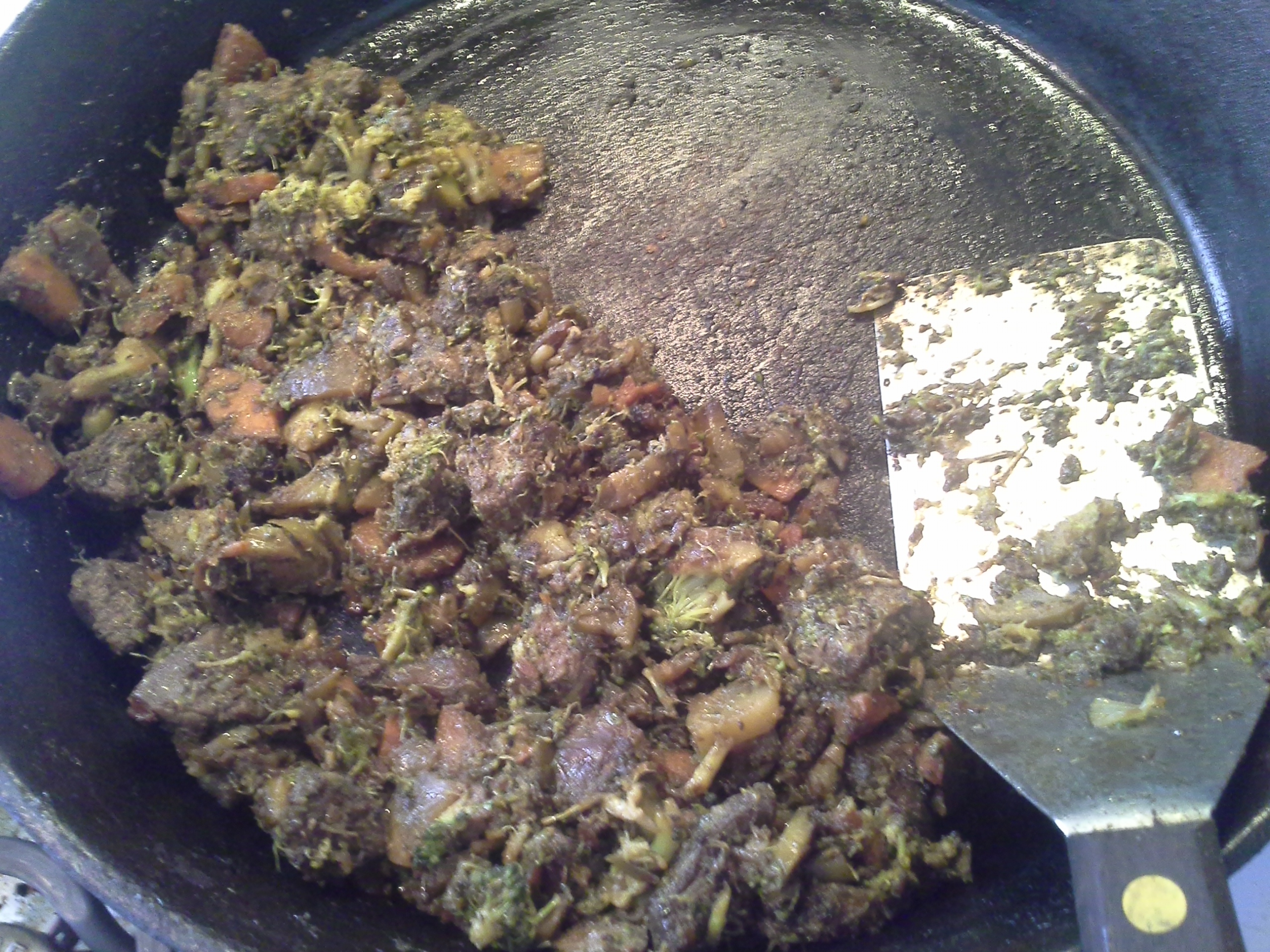
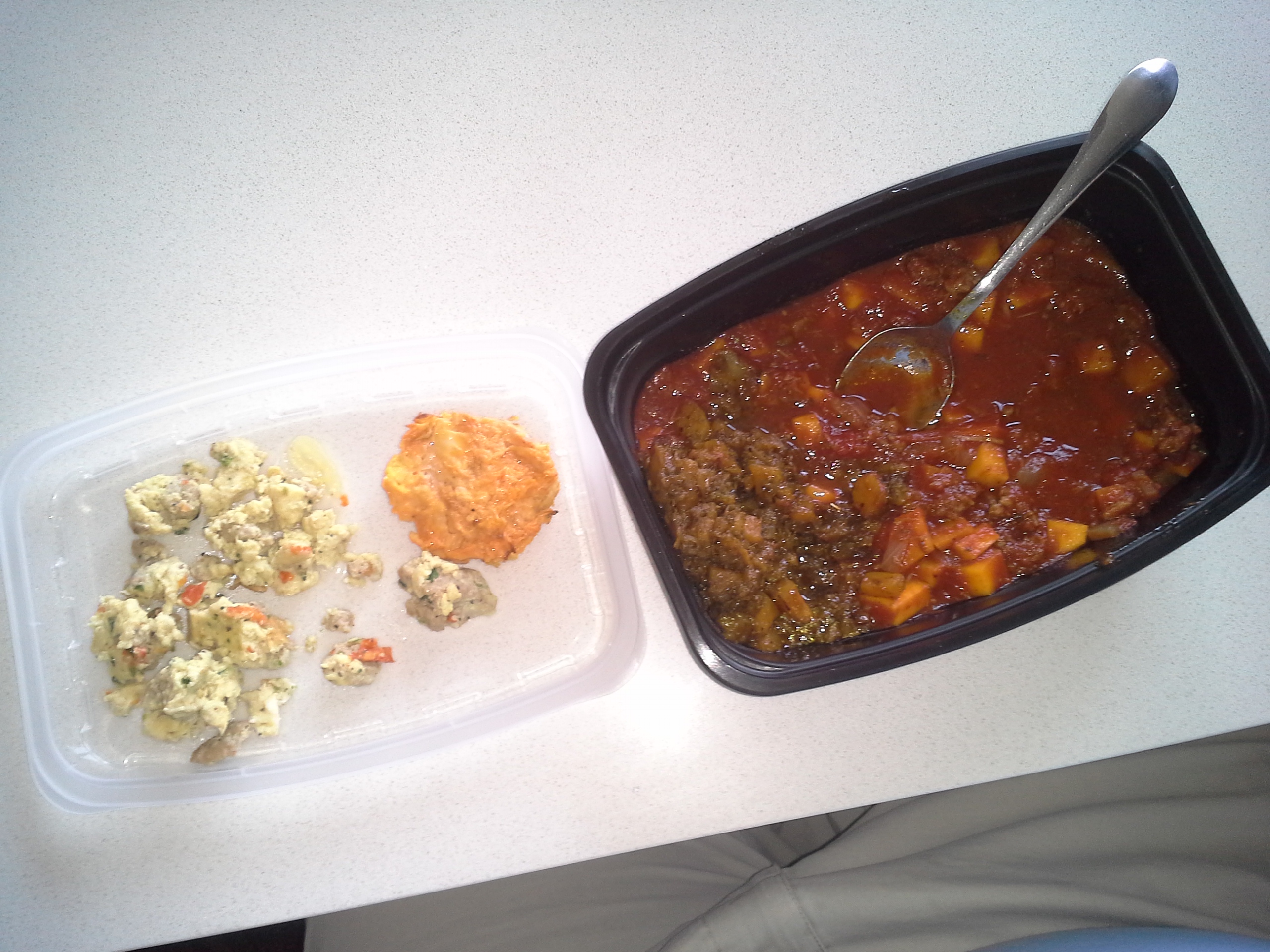
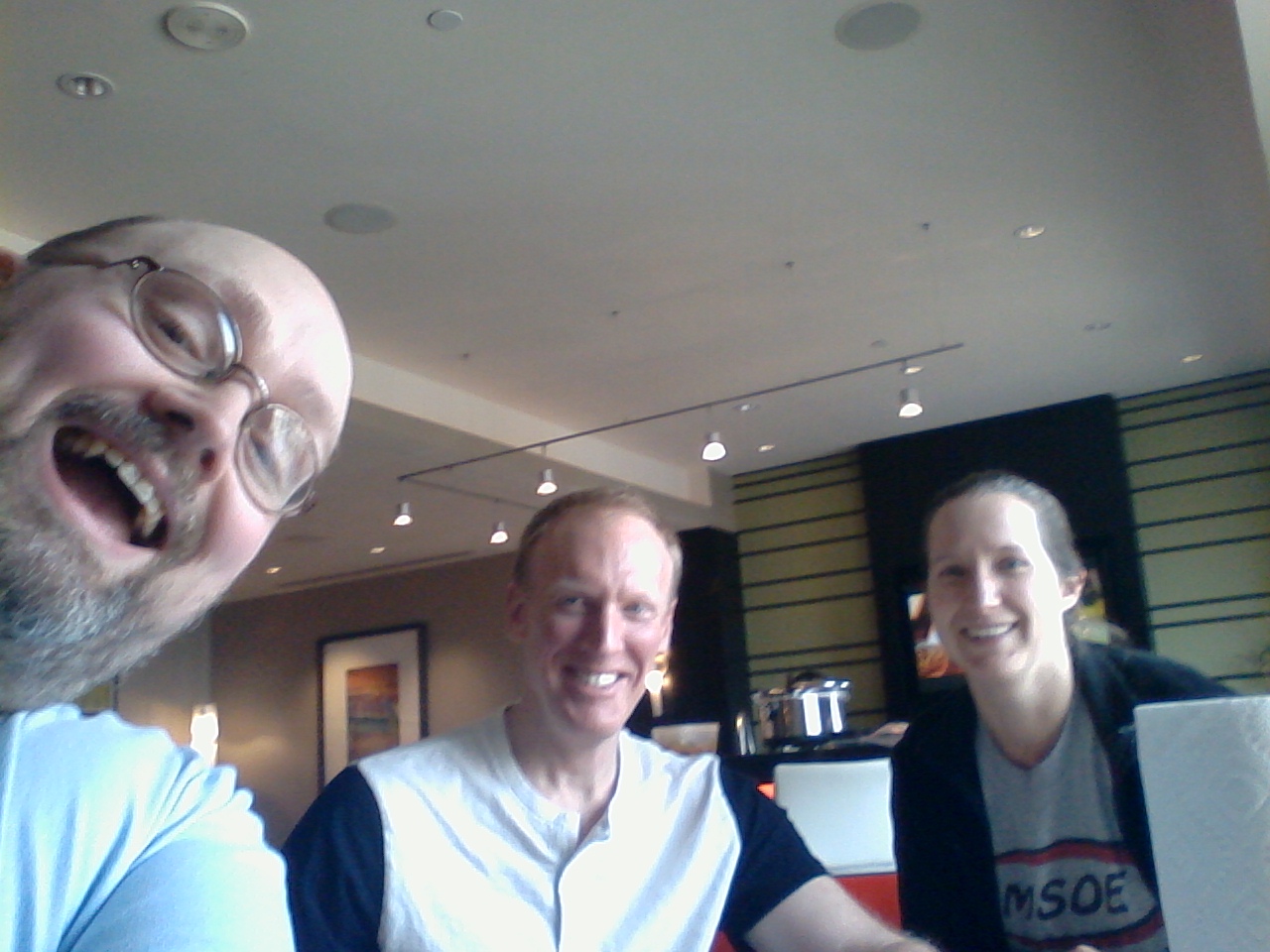
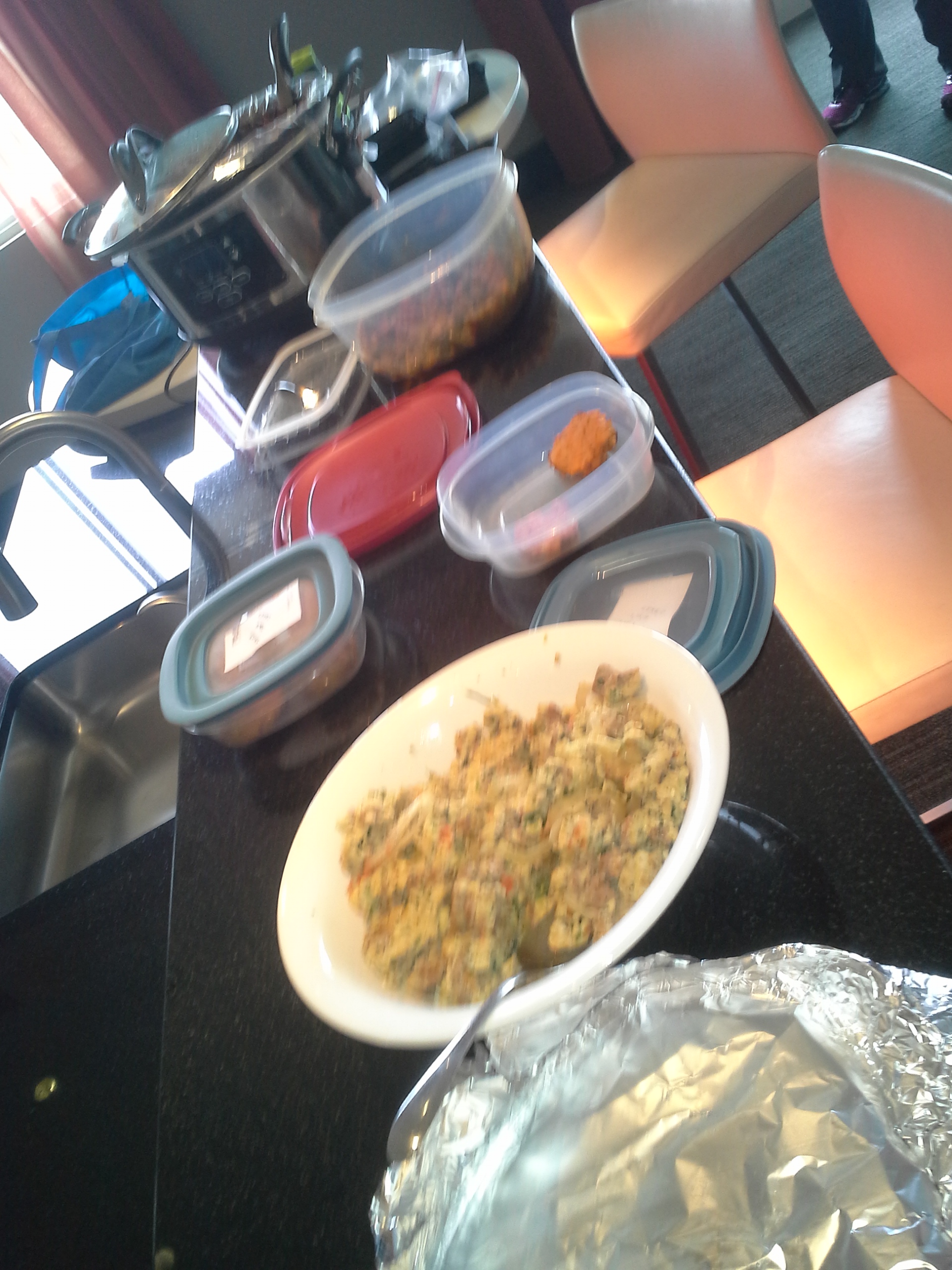
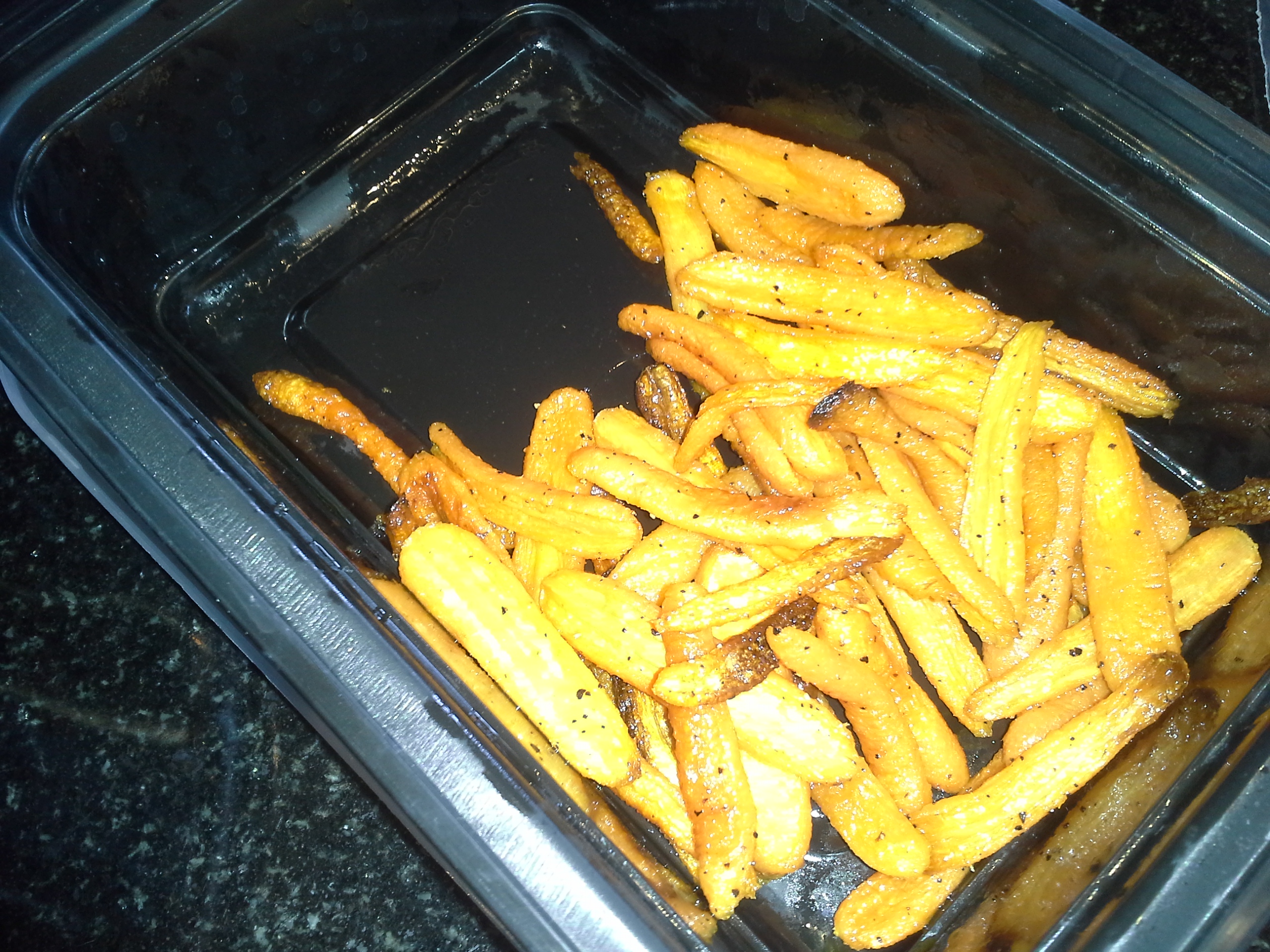
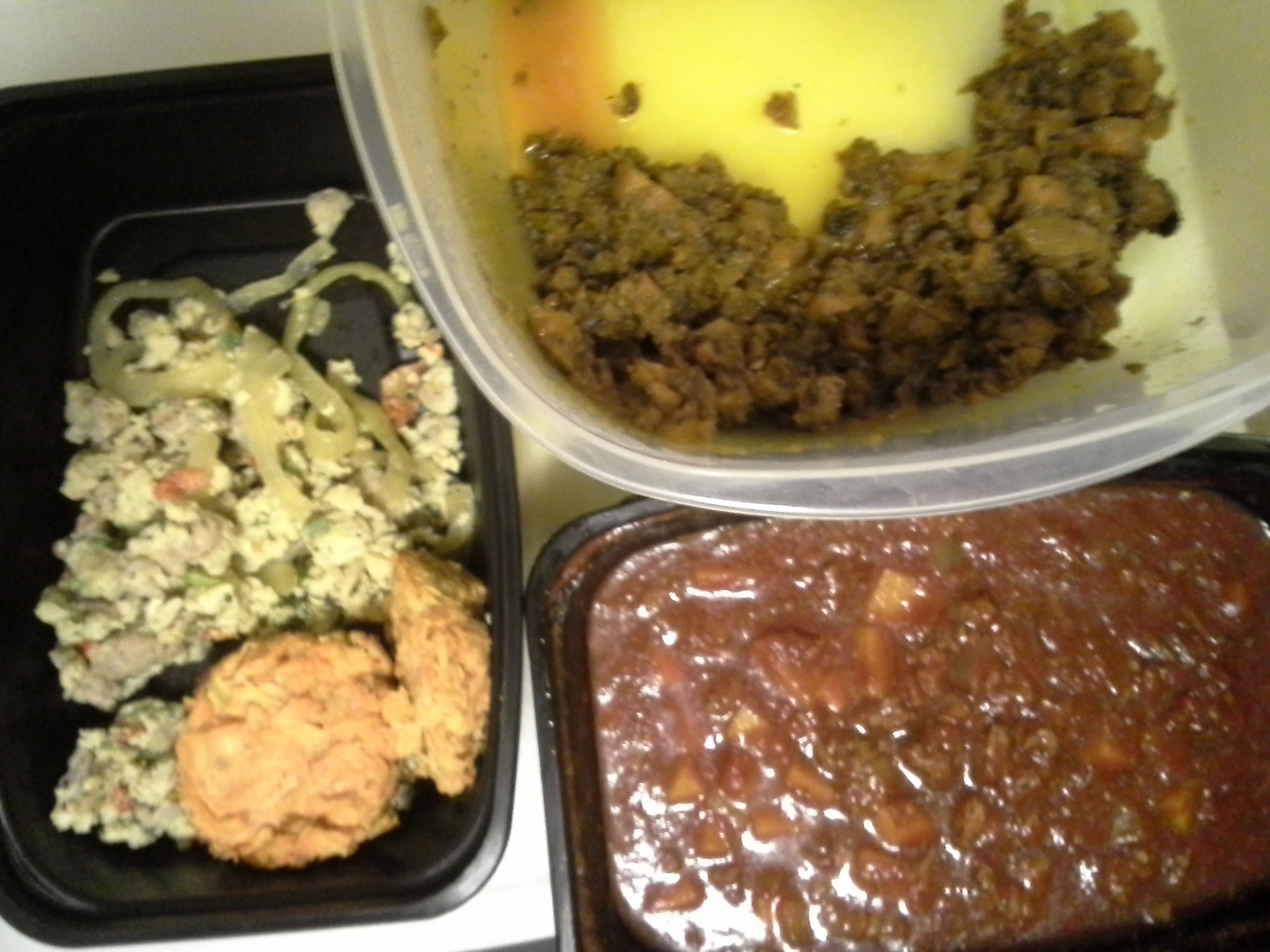





[…] so far for this double-length Whole30 has been simply to cook everything myself — aside from a single meal with much of the food prepared by fellow participants this past […]
Pingback by The Shrubbloggers » Whole30x2: Day 21 — April 18, 2015 @ 4:00 pm